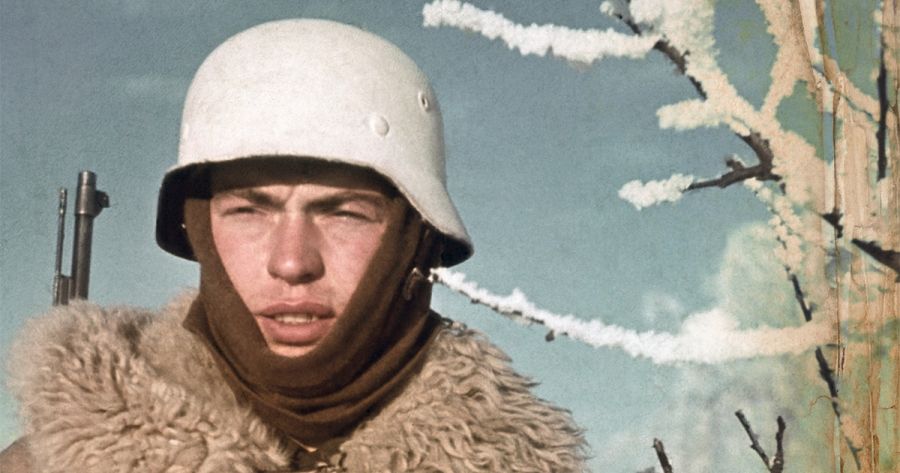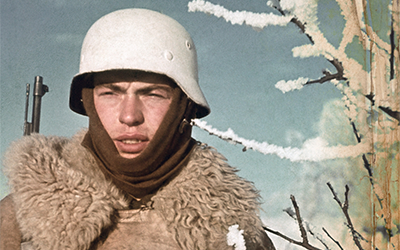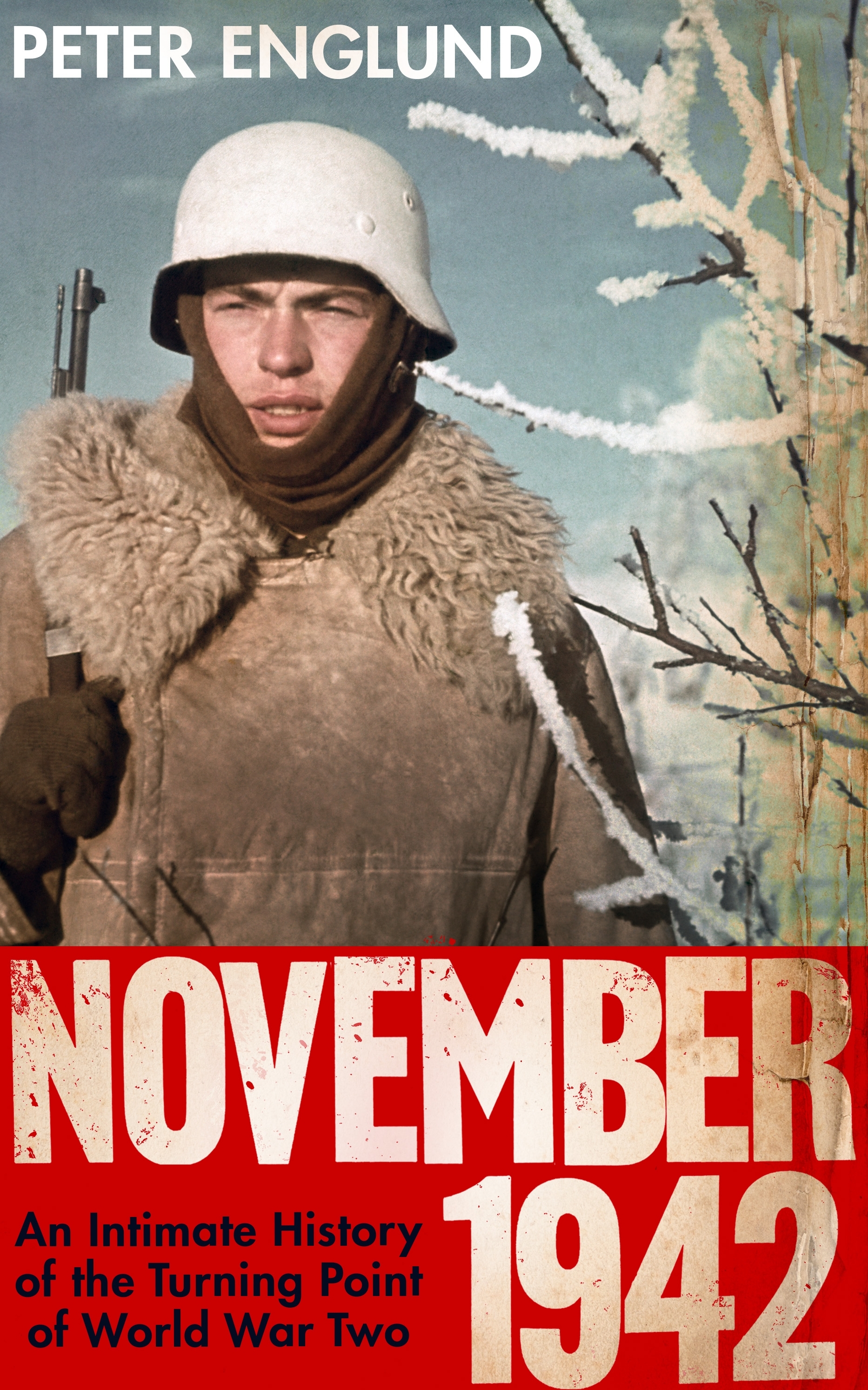
- Free Article: No
- Contents Category: Military History
- Review Article: Yes
- Article Title: ‘Crazy hysterical mess’
- Article Subtitle: One month of World War II
- Online Only: No
- Custom Highlight Text:
As its title tells us, this book focuses on one month of World War II: November 1942. Swedish author and historian Peter Englund argues that this month was the turning point of the war. In North Africa, the Germans were on the retreat after the Allied victory at El Alamein. American forces began their land operations against the Axis powers by invading French Morocco and Algeria. In the Pacific war, the battle of Guadalcanal reached its decisive climax, while Australian troops recaptured Kokoda after pushing the Japanese back along the Kokoda Track. Most importantly, on the Eastern front, the Red Army launched an attack that surrounded the German 6th Army in Stalingrad. Two months later, the 91,000 German troops still alive in the ruins of the city surrendered. Almost all of them perished in captivity.
- Featured Image (400px * 250px):

- Alt Tag (Featured Image): Joan Beaumont reviews ‘November 1942: An intimate history of the turning point of the Second World War’ by Peter Englund
- Book 1 Title: November 1942
- Book 1 Subtitle: An intimate history of the turning point of the Second World War
- Book 1 Biblio: Bodley Head, $36.99 pb, 486 pp
- Book 1 Cover Small (400 x 600):

- Book 1 Cover (800 x 1200):

This is a view of the war that few military historians would contest, although it is a Eurocentric one. As many Western histories do, it marginalises the conflict between Japan and China from 1937 to 1945. This was at something of a stalemate in 1942, but it resulted in the deaths of at least twenty million Chinese soldiers and civilians (Chinese estimates are considerably higher). Englund acknowledges the famine in one Chinese province where famine killed perhaps a quarter of million in 1942-43, but devotes only a few of his more than 400 pages to it.
Englund’s book is not a traditional account of November 1942. Rather, it takes the form of interwoven biographies of some thirty-nine men and women from different theatres of the war. It documents their daily lives, as detailed in their diaries and memoirs, fleshing these out with what now seems to be a popular genre, creative non-fiction. Englund concedes that this is an experimental historiography, but he argues that the complexity of events emerges most clearly at the level of the individual.
Englund’s coverage is wide and eclectic. We meet not only soldiers, paratroopers, and tank crews from the various defence forces fighting the crucial battles of Stalingrad, El Alamein, and Guadalcanal. The ‘dramatis personae’, as Englund calls them, also include: a machine-gunner in an RAAF Lancaster bomber; sailors on British merchant vessels, including on an Arctic convoy taking aid to Russia; an inmate of the Treblinka extermination squad who was forced to extract gold teeth from the corpses of murdered Jews; housewives in the United Kingdom and the United States; a partisan in Russia; a ‘comfort woman’ forced to serve Japanese sexual needs in Burma; refugees in Poland, Stalingrad, Leningrad, and Shanghai; journalists in Tunisia and the Soviet Union; and students in Chicago, Paris, and Germany (the last being the extraordinarily brave protester Sophie Scholl, who was executed by guillotine by the Nazis shortly after November 1942).
Among the more famous figures are Vera Brittain, author of the World War I memoir Testament of Youth and a pacifist in London during World War II; Albert Camus, the French philosopher and author active in the French resistance; and the British fascist and defector to Berlin, John Amery (son of the British politician Leo Amery).
Few Australians make an appearance. One is Edward ‘Weary’ Dunlop, who in November 1942 was embarking on a journey from Java, where he had been captured in March 1942, to Singapore and, ultimately, the Thai-Burma railway. His diary remains one of the best contemporary records of captivity in Japanese prisoner-of-war camps and was an obvious source for Englund. Another Australian, who appears occasionally, is the sergeant with the 3rd Battalion, Bede Tongs, who won a Military Medal on the Kokoda Track in October 1942. (Englund, unfortunately, insists on calling him Bede Thongs.)
Given the range of Englund’s biographies, every reader should find much of interest. Some narratives, of course, are more dramatic and confronting than others. Surviving the siege of Leningrad is more gripping than coping with rationing in the unoccupied United States and Britain. But Englund’s skills as a storyteller, translated by Peter Graves, bring almost all experiences to life. The dramatic effect is lessened by the biographies being presented in slices, interspersed with other narratives and spread across November. Readers with short attention spans will presumably be motivated to keep going, but the development of individual characters is fragmented.
This is not a book for readers who are unfamiliar with the chronology of World War II. Englund opens by saying that he will not describe ‘what the war was during these four critical weeks’. This is a good call, given the plethora of books about Stalingrad, the North Africa campaigns, and Guadalcanal. But some readers will struggle to know why these three campaigns mattered so much. Why were the British (and, for that matter, Australians) fighting in North Africa? Why were the Rumanians, the Achilles heel in German defences, involved in Stalingrad? Why were British convoys going to Russia? Why did American troops land in Morocco and Algeria (this, as it happens, was one of the most contested decisions in the grand strategy of Britain and the United States). I could go on.
Context matters; not least because Englund contends that there is ‘remarkable tension between the purpose of the war and how it was experienced, between its grand aims and the reality that more often than not was a “crazy hysterical mess”’ (here he quotes the novelist John Steinbeck). At times, Englund inserts contextual detail about the war’s wider dynamics in the text or notes. But we learn little about the supposed disconnect between these and the ‘reality’ of November 1942.
The striking achievement of this book is its range of human stories and the personal testimonies that Englund unearthed to document these. Although he speaks of one ‘war’, Englund reminds us that World War II was in fact multiple conflicts, and that the many millions of individuals entangled in these faced radically different challenges in their efforts to survive.


Comments powered by CComment